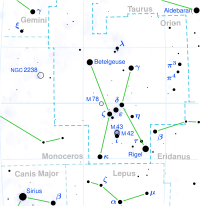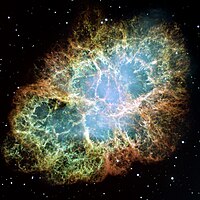
Graphite grain-size spectrum and molecules from core-collapse supernovae
Sign Up to like & getrecommendations! Published in 2018 at "Geochimica et Cosmochimica Acta"
DOI: 10.1016/j.gca.2017.06.027
Abstract: Abstract Our goal is to compute the abundances of carbon atomic complexes that emerge from the C + O cores of core-collapse supernovae. We utilize our chemical reaction network in which every atomic step of growth employs… read more here.
Keywords: graphite grain; carbon; collapse supernovae; core collapse ... See more keywords

Introducing a new multi-particle collision method for the evolution of dense stellar systems
Sign Up to like & getrecommendations! Published in 2021 at "Astronomy and Astrophysics"
DOI: 10.1051/0004-6361/202038784
Abstract: Context. In a previous paper we introduced a new method for simulating collisional gravitational N-body systems with linear time scaling on N, based on the Multi-Particle Collision (MPC) approach. This allows us to easily simulate… read more here.
Keywords: collapse; evolution; particle collision; multi particle ... See more keywords

From core collapse to superluminous: the rates of massive stellar explosions from the Palomar Transient Factory
Sign Up to like & getrecommendations! Published in 2020 at "Monthly Notices of the Royal Astronomical Society"
DOI: 10.1093/mnras/staa3607
Abstract: We present measurements of the local core-collapse supernova (CCSN) rate using SN discoveries from the Palomar Transient Factory (PTF). We use a Monte Carlo simulation of hundreds of millions of SN light-curve realizations coupled with… read more here.
Keywords: volumetric rate; transient factory; slsn; rate ... See more keywords

Properties of gamma-ray decay lines in 3D core-collapse supernova models, with application to SN 1987A and Cas A
Sign Up to like & getrecommendations! Published in 2020 at "Monthly Notices of the Royal Astronomical Society"
DOI: 10.1093/mnras/staa736
Abstract: Comparison of theoretical line profiles to observations provides important tests for supernova explosion models. We study the shapes of radioactive decay lines predicted by current 3D core-collapse ... read more here.
Keywords: properties gamma; gamma ray; core collapse; decay lines ... See more keywords

The infancy of core-collapse supernova remnants
Sign Up to like & getrecommendations! Published in 2021 at "Monthly Notices of the Royal Astronomical Society"
DOI: 10.1093/mnras/stab116
Abstract: We present 3D hydrodynamic simulations of neutrino-driven supernovae (SNe) with the PROMETHEUS-HOTB code, evolving the asymmetrically expanding ejecta from shock breakout until they reach the homologous expansion phase after roughly one year. Our calculations continue… read more here.
Keywords: core collapse; collapse supernova; infancy core; supernova remnants ... See more keywords

The Dark Energy Survey supernova programme: modelling selection efficiency and observed core-collapse supernova contamination
Sign Up to like & getrecommendations! Published in 2021 at "Monthly Notices of the Royal Astronomical Society"
DOI: 10.1093/mnras/stab1353
Abstract: The analysis of current and future cosmological surveys of Type Ia supernovae (SNe Ia) at high redshift depends on the accurate photometric classification of the SN events detected. Generating realistic simulations of photometric SN surveys… read more here.
Keywords: contamination; dark energy; core collapse; selection ... See more keywords

From the CMF to the IMF: beyond the core-collapse model
Sign Up to like & getrecommendations! Published in 2020 at "Monthly Notices of the Royal Astronomical Society"
DOI: 10.1093/mnras/stab844
Abstract: Observations have indicated that the pre-stellar core mass function (CMF) is similar to the stellar initial mass function (IMF), except for an offset towards larger masses. This has led to the idea that there is… read more here.
Keywords: core collapse; cmf imf; collapse model; core ... See more keywords

Core collapse supernova remnants with ears
Sign Up to like & getrecommendations! Published in 2017 at "Monthly Notices of the Royal Astronomical Society"
DOI: 10.1093/mnras/stx534
Abstract: We study the morphologies of core collapse supernova remnants (CCSNRs) and find that about third of CCSNRs in our sample have two opposite `ears' protruding from their main shell. We assume that the ears are… read more here.
Keywords: supernova remnants; collapse supernova; core collapse; energy ... See more keywords

Measuring dust in core-collapse supernovae with a Bayesian approach to line profile modelling
Sign Up to like & getrecommendations! Published in 2018 at "Monthly Notices of the Royal Astronomical Society"
DOI: 10.1093/mnras/sty2094
Abstract: Optical and near-IR (NIR) line profiles of many ageing core-collapse supernovae (CCSNe) exhibit an apparently asymmetric bluewards shift caused by greater extinction by internal dust of redshifted radiation emitted from the receding regions of the… read more here.
Keywords: collapse supernovae; line; bayesian approach; dust ... See more keywords

On the importance of progenitor asymmetry to shock revival in core-collapse supernovae
Sign Up to like & getrecommendations! Published in 2018 at "Monthly Notices of the Royal Astronomical Society"
DOI: 10.1093/mnras/sty3114
Abstract: The progenitor stars of core-collapse supernovae (CCSNe) are asymmetrically fluctuating due to turbulent convections in the late stages of their lives. The progenitor asymmetry at the pre-supernova stage has recently caught the attention as a… read more here.
Keywords: shock revival; asymmetry; progenitor; core collapse ... See more keywords

Synthetic spectra of energetic core-collapse supernovae and the early spectra of SN 2007bi and SN 1999as
Sign Up to like & getrecommendations! Published in 2019 at "Monthly Notices of the Royal Astronomical Society"
DOI: 10.1093/mnras/stz262
Abstract: SN 2007bi and SN 1999as are among the first superluminous supernovae discovered. SN 2007bi was suggested to be powered by the radioactive decay of a large amount (5-10 M) of 56Ni. SN 1999as has a… read more here.
Keywords: collapse supernovae; energetic core; synthetic spectra; 2007bi 1999as ... See more keywords